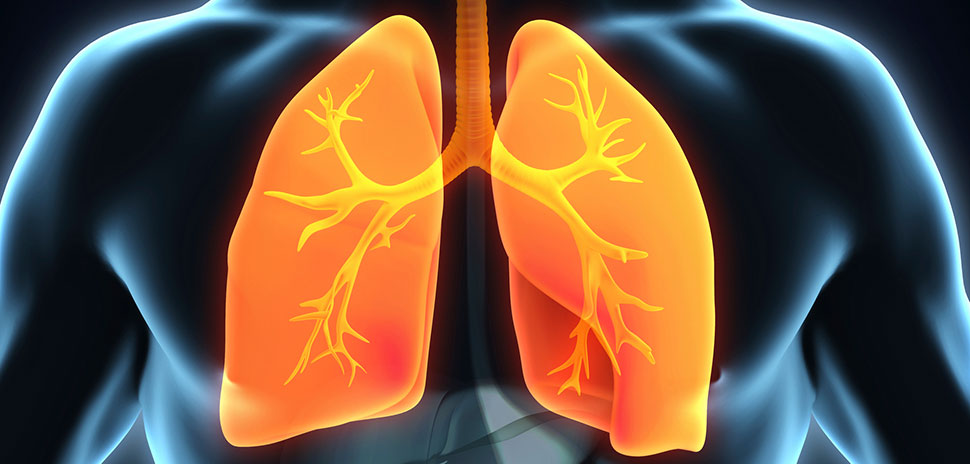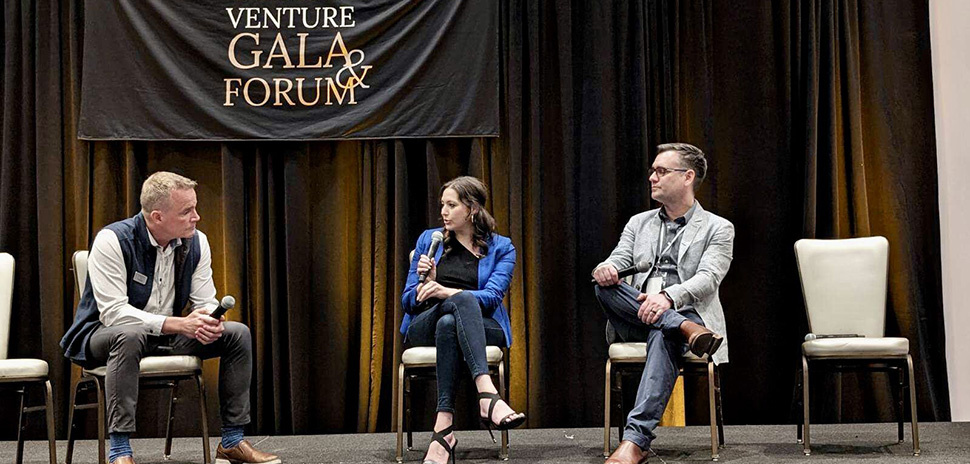Scientists and researchers across DFW are making discoveries that improve our lives every day. Here are some of the stories.
UT SOUTHWESTERN IDs COMPOUNDS WITH LUNG CANCER THERAPY POTENTIAL
![]() Researchers at UT Southwestern Simmons Cancer Center have identified 170 out of the more than 20,000 chemical compounds they tested as potential candidates to develop into drug therapies to treat lung cancer.
Researchers at UT Southwestern Simmons Cancer Center have identified 170 out of the more than 20,000 chemical compounds they tested as potential candidates to develop into drug therapies to treat lung cancer.
It was part of a five-year project aimed at identifying new therapeutic targets for non-small cell lung cancer, along with potential drugs for those targets. The work is a significant step toward personalizing cancer care, according to UT Southwestern.
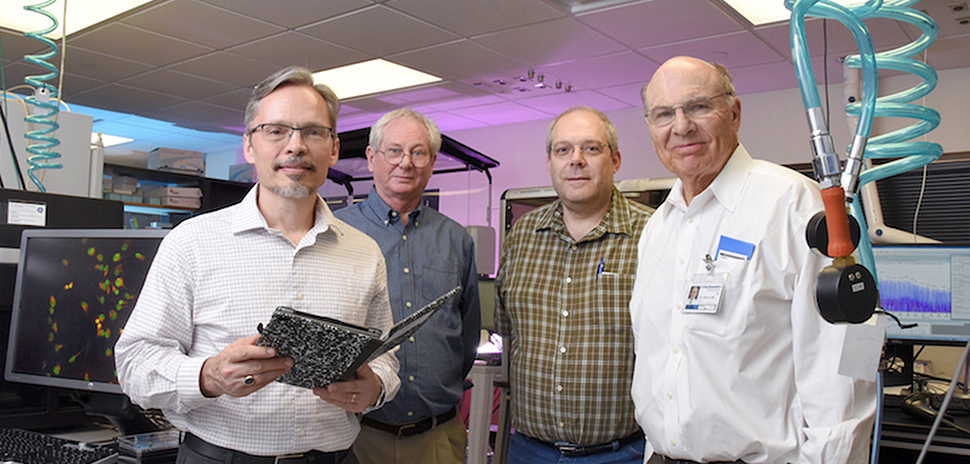
Drs. Bruce Posner, Michael Roth, Michael Peyton, and John Minna were part of the team of scientists who identified 170 chemicals for potential new targets to develop drugs to treat lung cancer. [Photo courtesy of UT Southwestern]
“For the large majority of compounds, we identified a predictive biomarker — a feature that allows the development of ‘precision medicine,’ or individualized treatment for each patient, which is a major goal of the Simmons Cancer Center,” Dr. John Minna, director of the Hamon Center for Therapeutic Oncology Research at UT Southwestern, said in the release.
UT Southwestern has a unique lung cancer cell library — the world’s largest — and it was used by researchers who searched for compounds that would kill cancer cells, while doing no harm to normal lung cells, UTSW said.
To find out where the research goes next, read here.
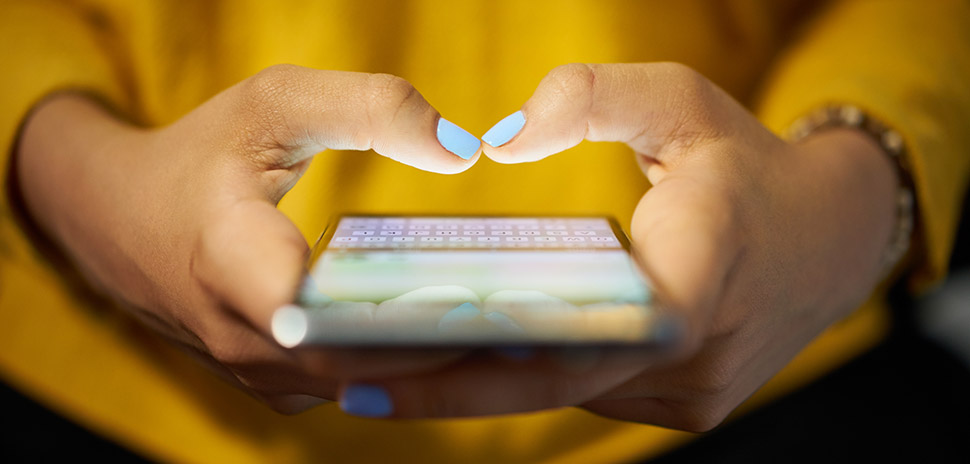
Photo: Diego Cervo/iStockPhoto
UTD RESEARCHERS DEVELOP LONGER-LASTING CELLPHONE BATTERY
If you’re looking for a longer-lasting cellphone battery, researchers at the Erik Jonsson School of Engineering and Computer Science at the University of Texas at Dallas may have the answer.
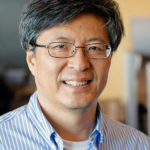
K.J. Cho
The team of researchers has developed a method to use lithium-sulfur batteries as an environmentally safe, higher-power battery alternative to lithium-ion batteries commonly used in smartphones and electronics. The research recently was published in the journal Nature Nanotechnology.
Lithium-sulfur batteries are cheaper to make, weigh less, and are better for the environment than lithium-ion batteries, the researchers said.
“Common lithium-ion batteries only have a certain capacity,” Kyeongjae “K.J.” Cho, professor of materials science and engineering, said in a release. “And most people want to use their phones for a longer time.”
It’s not the first battery breakthrough for the UT Dallas researchers, as last year they unveiled new material that could offer a lower-cost and an eco-friendlier option to replace current battery technology in electric vehicles.
UT Dallas said that Cho, along with research associate Jeongwoon Hwang, has worked with other regional scientists to improve lithium-sulfur batteries.
Find out more about their lithium-sulfur research here.
LUPUS ORGANIZATION AWARDS UNTHSC RESEARCHER $300K GRANT
A researcher at the University of North Texas Health Science Center at Fort Worth is one of nine winners of Novel Research Grants from the Lupus Research Alliance.

Keisa Mathis [Photo courtesy of UNTSC]
Keisa Williams Mathis discovered that nicotine has the potential to reduce inflammation in lupus patients. Nicotine is commonly found in tobacco cigarettes.
Lupus is an autoimmune inflammatory disease that can affect many of the body’s systems, and it impacts each patient differently. Included among the common symptoms are a rash, joint and muscle pain, kidney problems, and neurological disorders.
The alliance said that the grants — each of which comes with three-year, $300,000 funding — support research into the complex issues of lupus, and that the winners’ studies varied from testing new and existing therapies to exploring ways to develop new ones.
After her discovery, Mathis is studying nontoxic molecules that could work similarly to nicotine in reducing inflammation. Also, she will assess how the therapy behaves in the brain as she looks for ways to eliminate negative behavior changes brought on by lupus.
STUDY: KIDS WITH HEARING LOSS MORE LIKELY TO BE BULLIED
Children and adolescents with hearing loss are more likely to be the victims of bullying than children with typical hearing, according to research from the University of Texas at Dallas.

Andrea Warner-Czyz [Photo courtesy of UTD]
According to the study, roughly 50 percent of adolescents with hearing loss reported that they were picked on in the past year, while 28 percent of adolescents in the general population said they were bullied.
“I thought more children and adolescents with hearing loss would report getting picked on, but I did not expect the rates to be twice as high as the general population,” Andrea Warner-Czyz, assistant professor in the School of Behavioral and Brain Sciences and a researcher at the Callier Center for Communications Disorders, said in a release.
Bullying experienced by youth and adolescents with hearing loss mimics the patterns that kids with other special needs, but with significantly higher rates of social exclusion, according to the study, which appears in the journal Exceptional Children.










